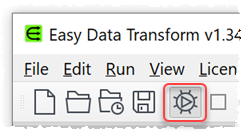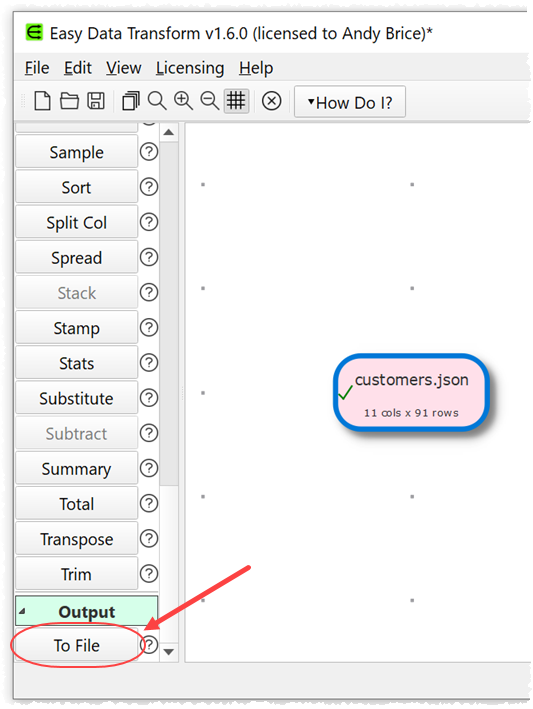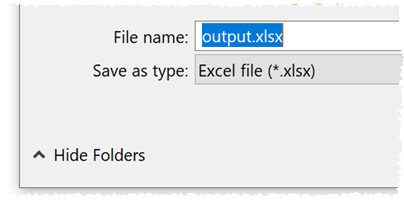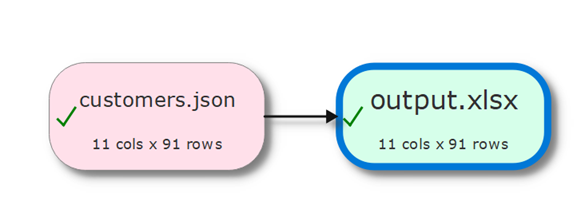JSON and Excel are both extensively used for storing and exchanging data. They are very different in structure (JSON is text structured as a tree and Excel is proprietary data structured as one or more tables). But you can easily convert JSON to Excel with Easy Data Transform:
- Download and install Easy Data Transform on your PC or Mac, if you haven’t done so already. It will only take a minute. There is a fully functional free trial and you don’t have to give us your email or sign up to anything.
- Start Easy Data Transform. Make sure the Auto Run button is pressed in.

- Drag the JSON file you wish to convert onto Easy Data Transform. The file name should end in .json. A pink input item will be added.
- Notice in the Right pane that the JSON data has has been automatically ‘flattened’ into a table, suitable for output to an Excel .xlsx/.xls file.
- You can set the Format drop-down in the Right pane to Long or Wide, depending on whether you want the tables to have more rows or more columns.
- Ensuring the pink input item is selected, click the To File button in the Left pane (scroll to the bottom of the Left pane).

- A window will appear. Set the new file name and location. Select Excel file (*.xlsx) or Excel file (*.xls) as the file type.

- A green output item is added and selected.

- The Excel file is created immediately at the chosen location, no need to ‘run’ anything.
Example JSON input:
[
{
"CustomerID": "ALFKI",
"CompanyName": "Alfreds Futterkiste",
"ContactName": "Maria Anders"
},
{
"CustomerID": "ANATR",
"CompanyName": "Ana Trujillo Emparedados y helados",
"ContactName": "Ana Trujillo"
},
{
"CustomerID": "ANTON",
"CompanyName": "Antonio Moreno Taquería",
"ContactName": "Antonio Moreno"
}
]
Example Excel output:

The dot (‘.’) character is used to show nesting of JSON values. For example:
[
{
"name": "Avocado Dip",
"carb": "2",
"cholesterol": "5",
"fiber": "0",
"minerals": {
"ca": "0",
"fe": "0"
},
"protein": "1",
"sodium": "210",
"vitamins": {
"a": "0",
"c": "0"
}
}
]
Will be ‘flattened’ into Excel as:

Use the Rename Cols transform before output if you want to rename any of the columns.
If you have a large number of files to convert you can do it using the batch processing feature to do it in one operation.
You can do all this conversion offline. You do not need an Internet connection.
As well as changing file format, Easy Data Transform also allows you to combine 73 transforms (such as merge, filter and de-dupe) to quickly and easily create complex data transformations.

 Windows Download
Windows Download
 Mac Download
Mac Download